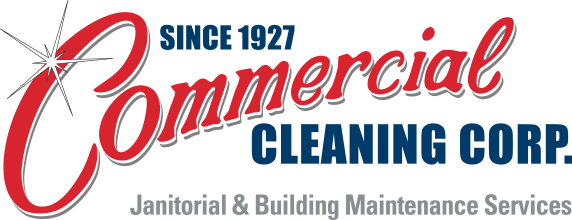As the holiday season approaches, commercial facilities of all kinds, from healthcare institutions to corporate campuses and private schools, face a familiar challenge: preparing for the surge. Increased foot traffic, extended hours, more frequent events, and expanded food service all place greater demand on your cleaning and facility operations. On top of that, many organizations bring on temporary staff, adjust floor plans to accommodate decorations, and loosen standard routines to “make room for the season.” These changes introduce sanitation blind spots and elevate your exposure to compliance risks.
But the reality is that OSHA and FDA requirements don’t take a holiday. In fact, regulatory agencies expect you to maintain, if not heighten, your safety, sanitation, and documentation protocols during high‑risk seasons. And with increased public scrutiny around health, hygiene, and workplace safety, keeping up with compliance during the holidays through commercial cleaning services is not just about checking boxes. It’s about protecting your people, your brand, and your liability.
Review how to prepare your facility for holiday surges while staying compliant with OSHA, FDA, and internal sanitation standards.
What OSHA & FDA Expect During the Holidays
Regulatory compliance remains in full effect during the holiday season, regardless of how busy or short-staffed your facility might be. The Occupational Safety and Health Administration (OSHA) and Food and Drug Administration (FDA) continue to expect full adherence to safety and sanitation guidelines. These agencies also understand that risks increase during seasonal surges, which is why proactive planning is so critical.
From OSHA’s perspective, one of the most important seasonal risk factors is the influx of temporary or seasonal workers. These individuals are often brought on quickly and may not receive the same training or orientation as full-time staff. According to OSHA’s holiday safety resources, employers are responsible for ensuring that all workers, temporary or otherwise, are properly trained in hazard recognition, safe equipment use, and protective protocols, including cleaning chemicals and personal protective equipment (PPE).1 This training must be delivered in a language the employee understands, and must be documented.1
OSHA also emphasizes maintaining clear walkways; preventing slip, trip and fall hazards (especially in areas with decorations or increased moisture from snow); and making sure that waste is handled correctly to avoid health risks or pest issues.
For FDA-regulated spaces, especially those in foodservice, healthcare, and institutional dining, seasonal surges are a known pressure point. The Food Safety Modernization Act (FSMA) requires facilities to follow a “preventive controls” model as opposed to a reactive one, meaning sanitation programs must be in place well before risks arise.2 The FSMA emphasizes that avoidable foodborne illness is not only a public health issue but a risk to the economic integrity of the entire food system. During the holidays, when food is prepared or served at higher volumes or during special events, facilities must verify that all food-contact surfaces are cleaned and sanitized properly, and that cleaning effectiveness is documented.
Any facility working with third-party vendors for food or cleaning services must confirm that their commercial cleaning partners are compliant with your Sanitation Standard Operating Procedures (SSOPs) and maintain their own records of food safety and cleaning compliance. This is especially critical for healthcare or long-term care environments, where both FDA and Centers for Medicare & Medicaid Services (CMS) standards may apply.
Holiday Facility Readiness Checklist
When your facility is managing hundreds of moving parts during the holidays, a focused cleaning compliance checklist can help keep your team aligned and proactive. Use this as a seasonal baseline to prevent oversights and elevate sanitation performance.
Before the Holiday Surge
- Reassess your cleaning and sanitation schedules, adding frequency for high-traffic zones and food-contact areas
- Conduct a walkthrough audit with your cleaning provider to pinpoint problem areas like entryways, restrooms, kitchens, and storage rooms
- Review PPE availability and ensure chemical use protocols are updated and understood by all staff
- Deliver refresher training for full-time staff and onboarding for seasonal workers, covering sanitation procedures, chemical handling, and compliance logs
- Communicate with internal departments (HR, events, operations, catering) to coordinate plans for decorations, temporary furniture, and vendor access
- Inspect and stock handwashing stations and hygiene supplies across all public and employee areas
During Peak Holiday Period
- Monitor daily cleaning logs for completion and accuracy, especially around high-touch and high-risk areas
- Spot-check sanitation practices during or after events: food service areas, bathrooms, break rooms, lobbies
- Reinforce expectations with third-party vendors to make sure cleaning crews are following your site-specific protocols
- Keep an eye on decoration-related hazards (e.g., cords, overcrowded walkways, overloaded outlets) so they’re not disrupting cleaning workflows
- Communicate frequently with staff about any changes to cleaning expectations or safety protocols
- Continue to document everything: training sessions, compliance inspections, vendor check-ins, and issue resolutions
Not very confident in your cleaning provider? The end of the year is a strategic time to revisit your janitorial contract as you evaluate budgets, performance, and vendor agreements ahead of the new year. Reviewing your contract now allows you to address any service gaps, ensure compliance expectations are being met, and make informed decisions before renewal periods kick in.
Why Holiday Compliance Can’t Slip
Sanitation and safety lapses don’t just lead to messy floors or missed checklists. They can trigger real consequences, and during the holidays, those consequences are amplified. A spill left unattended during a high-traffic event could result in a worker injury and a workers’ comp claim. A missed sanitation step in a foodservice area could result in illness or an FDA inspection. Even something as simple as blocked fire exits due to improperly placed decorations could land your facility in hot water with OSHA.
On the reputation side, clients and guests have higher visibility during the holidays. Facilities are often decorated, heavily trafficked, and under greater public scrutiny. A poorly maintained lobby or a foul odor in a restroom can leave a lasting impression on a prospective tenant, patient, or parent touring your private school. And that can lead to negative reviews on Google or other spaces across the web that truly damage your reputation. Compliance is about avoiding fines, but it’s also about preserving the trust and confidence your stakeholders place in your operation.
Get Ahead of the Season
At Commercial Cleaning Corporation, we specialize in helping facilities across the Mid-Atlantic region stay clean, compliant, and audit-ready all year long, especially during high-stakes periods like the holiday season. Our teams are trained in OSHA and FDA cleaning protocols, and we work closely with operations leaders to customize seasonal cleaning schedules, support staff on sanitation best practices, and keep proper documentation every step of the way.
Whether you’re managing a busy hospital, coordinating holiday events at a corporate campus, or preparing your private school for winter break, we have the experience, event cleaning services, and commercial cleaning systems to keep your environment safe, compliant, and looking its best.
Ready to get ahead of the holiday surge? Contact us to schedule your pre-season cleaning consultation with Commercial Cleaning Corporation today. Our experts will walk your facility, identify key risk areas, and help you build a sanitation and compliance plan that’s tailored to your industry and operations. Let’s make this holiday season your cleanest and safest one yet.
Sources:
1. 9 Tips to Protect Workers During the Holiday, US Department of Labor
2. Food Safety Modernization Act (FSMA), U.S. Food & Drug Administration


One thought on “Holiday Sanitation & Compliance: Your Facility’s Game Plan for Seasonal Surges”
Comments are closed.